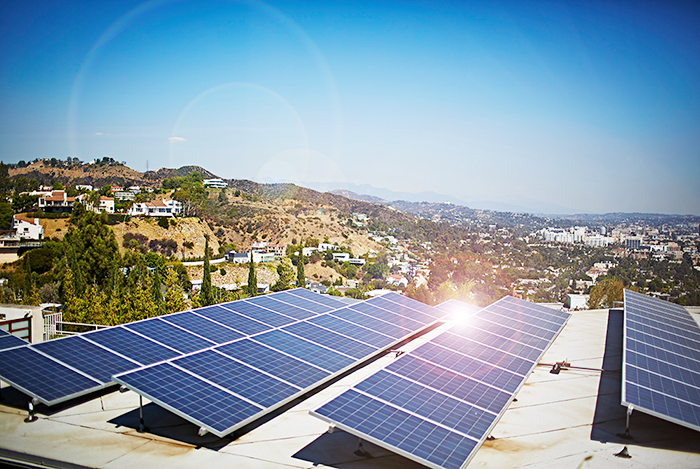Firstly. U.S. PV Market Growth Drivers and Challenges
Since 2013, U.S. PV kWh prices have been lower than coal, making it one of the low-cost energy sources. However, PV installations have experienced two significant negative growth rates in the past decade, related to changes in ITC tax credit policies and changes in China's module import policies, respectively. Ground-mounted plants are the dominant mode of PV installation in the US, accounting for 60-70% of the total. In recent quarters, residential installations have been pressured by late interest rate hikes and state-specific policy adjustments. Despite the high interest rate environment, U.S. ground-mounted plants have shown good returns, mainly due to the support of ITC subsidy policies. It is expected that PV installations will continue to grow in the future with lower interest rates and the continuation of the ITC policy. U.S. photovoltaic installations have occupied a high proportion, but still far below the share of fossil energy in the local power structure. The Biden government's new policy significantly extends the ITC subsidy ratio, for photovoltaic installed capacity growth provides long-term support. The current project reserve is sufficient, predicting that the next two years will continue to maintain a double-digit growth rate. IEA updated 2024 annual new power installation target, which 24 years of large-scale PV power plants in the United States (size > 1MW1MW ) 36.4GW, accounting for 58% of the overall power installation scale of the plan in 2024, the U.S. power sector new PV power generation installed in 2023 is 18.4GW, 24 In 2023, the U.S. power sector will have 18.4GW of new PV power installed, and the target for 2023 is double the amount installed in 2023. Given the limited domestic production capacity and high costs in the US, it relies heavily on imports. As of the end of 23, the U.S. domestic module production capacity was less than 7GW, and more than 2/3 of the modules need to rely on imports.

Secondly, the impact of Southeast Asia's PV supply system under double reverse sanctions
The U.S. imposes double anti-dumping sanctions on Chinese PV companies, resulting in PV production capacity in Southeast Asia becoming a major supplier to the U.S. market. High tariffs and restrictions on China's raw material supply chain have prompted firms to move capacity to Southeast Asia and increase local production capacity. However, the latest round of sanctions could lead to capacity constraints in Southeast Asia, which in turn could affect supply and price increases in the U.S. market. The U.S. imposition of double-anti-sanctions on East Asian countries is expected to lead to an increase in the cost of PV capacity in Southeast Asia, which remains dependent on the region's battery and upstream production capacity in the short term. Long-term need to consider the construction of local production capacity to circumvent the sanctions, to explore the integration of exports to fill the shortcomings of the model and the necessity and profitability of the U.S. local plant.
Third, the development of the U.S. photovoltaic industry and the impact of the IRA Act
The U.S. photovoltaic industry during the Biden government benefited from the IRA Act, which extends the ITC investment tax credit and provides huge supply-side incentives to promote the industry to return. This was designed to strongly support the development of local manufacturing and the PV industry chain, including high subsidies for module and material manufacturers and additional incentives for projects that meet certain local production ratios. In addition, the bill introduces labor standards and local manufacturing requirements, further promoting the trend of localized production in the PV industry, which is expected to strengthen in the coming years.
Fourth, the U.S. PV subsidy policy and its impact
The huge IR subsidy policy currently implemented by the United States has effectively activated local PV enterprises, such as First Solar, which has successfully turned losses into profits and achieved substantial growth in profits by applying for subsidies. The policy not only helps local companies improve their financial situation in the short term, but is also crucial for improving their future profitability. As the proportion of local production capacity increases, it is expected that LA subsidies will further enhance the profitability of companies such as First Solar. In addition, module prices are expected to rise again due to capacity constraints, easing previous concerns about falling prices or loss of premiums. The U.S. domestic PV industry faces bottlenecks in the supply of silicon, but is expected to maintain and enhance its competitiveness in the global market by increasing local production capacity and utilizing existing subsidy policies. Finally, a sensitivity analysis shows that the profitability of integrated modules in Southeast Asia declines under the impact of the double-reverse tariff rate, while the model of using U.S. batteries and assembly in Southeast Asia still has high profit potential.
Five, Chinese enterprises in the United States layout of photovoltaic production capacity challenges and opportunities
With the domestic and foreign integrated enterprise production capacity to the United States layout, especially Atlas and LONGi two enterprises in the United States construction scale continues to expand, indicating that the shortage of battery production capacity and the importance of the increasingly prominent. Despite the construction difficulties and technical thresholds, the forward-looking layout of battery production capacity is crucial to the long-term development of enterprises. In addition, companies that focus on localized operations and political and business relations are more likely to successfully take root in the U.S. and bring sustained excess profits. Meanwhile, investors should pay close attention to factors such as subsidy policies, tariff changes and patent risks in order to better grasp investment opportunities.







